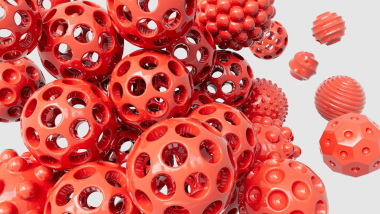The variety of almost limitless applications of 3D printing
An important advantage of 3D printing is the ability to customize the products. Companies can create customized products to better meet customers’ needs. In addition, 3D printing enables the weight of products to be reduced through internal honeycomb structures, which plays a particularly important role in the aviation and automotive industries.
3D printing is particularly suitable for the production of product portfolios that have a high variety of variants with a relatively small number of units per variant. This is especially true for objects with a high monetary value as well as a complex design. With continuous improvements in technology in terms of quality, printing speed and cost, 3D printing is becoming more and more attractive. New materials for 3D printing are constantly being developed, including plaster, ceramics, plastics, glass, wood compounds, food, metals and alloys, and organic materials.
The user groups can be divided into end customers and professional users. End customers can either purchase 3D printers or build their own printers to implement their ideas. The applications here range from model making to personalized everyday objects and art. In the professional sector there are visionary applications such as making meals for space travel or even houses. Industrial applications include supporting product development as well as printing objects that are either used as a final product or assembled as an assembly along with other components.
With regard to the integration of 3D printing into the life cycle of a component or product, four basic forms can be distinguished: rapid prototyping, rapid tooling, rapid manufacturing and rapid repair. Rapid prototyping involves producing prototypes and models that have limited functionality but have sufficiently well-defined specific features to be tested. Rapid tooling refers to the production of tools, tool components, gauges, molds or mold inserts using 3D printing. Rapid manufacturing refers to the direct production of end products or components for end products, especially for small series. Rapid Repair includes the material application process to maintain or repair worn components as well as the re-engineering of components using 3D scanning when no other sources of supply are available.
The future undoubtedly lies in additive manufacturing or 3D printing. The possibilities are almost limitless and offer companies and private individuals the chance to live out their creativity and develop innovative solutions. With continued technological advances and the introduction of new materials, 3D printing continues to bring revolutionary changes riego3d.com
